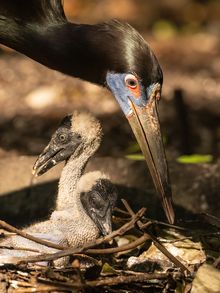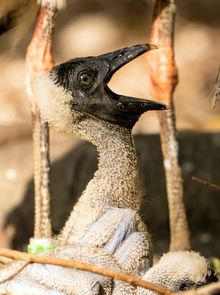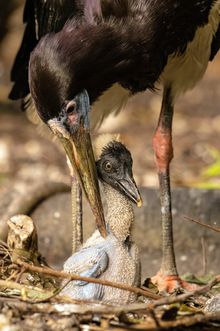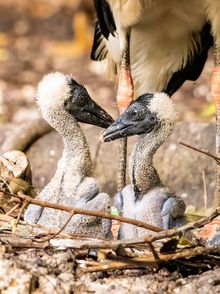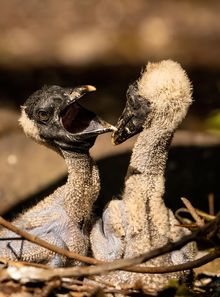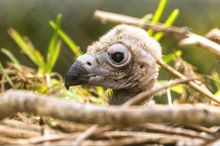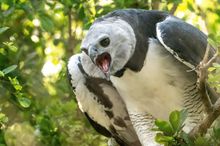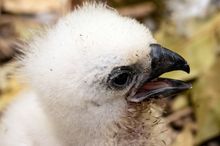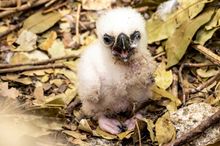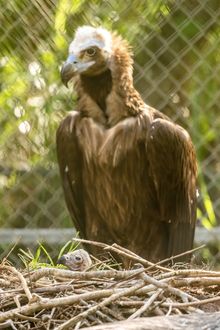 30 May 2025
30 May 2025
Tags: Animals, ZOOLIFE, ZooMiami, Wildlife, wildlife conservation

Recently, several birds have hatched at Zoo Miami, representing unique species from Tropical America, Asia, and Africa. All the chicks are being raised by their parents during this Mother's Day weekend.
On April 21st, the first of these hatchlings was a cinereous vulture. The cinereous vulture is the largest Old-World vulture and one of the heaviest flying birds in the world with some individuals weighing more than 20 pounds. Their wingspan can approach 9 feet. They are found in isolated areas of Europe, Asia, and the Middle East where they feed primarily on carrion. They are monogamous birds with lifelong pair bonds. The female lays only one egg in a nest that is reused year after year and can become very large over time. This impressive vulture is considered near threatened due to poisoning of prey items that are then transferred to the vultures through ingestion. The cinereous vultures are secluded in an off-exhibit habitat and currently not visible to guests.
On April 23rd, a harpy eagle hatched and is being raised by its parents in the harpy eagle habitat at Zoo Miami's “Amazon and Beyond” exhibit. Zoo Miami is the only accredited zoo in the U.S. to be presently successfully breeding this majestic raptor. Harpy eagles are the most powerful bird of prey on earth with talons the size of grizzly bear claws. They feed on a variety of canopy wildlife including sloths and monkeys in the forests of Tropical America. The public can view the parents caring for the chick through a CCTV image that is projected in real time at the habitat where they reside.
Finally, a pair of Abdim's storks hatched out at Zoo Miami's Wings of Asia Aviary on April 27th and 28th. Abdim's storks are among the smallest species of storks reaching a height of only about 3 feet. They are found in a variety of regions in Sub-Saharan Africa and are recognized by their blue face and bright red patch adjacent to each eye. Abdim's storks prefer grasslands where they feed on a variety of insects, especially grasshoppers. The chicks can be seen in their nest from the public viewing areas in the aviary where the parents are doing an excellent job caring for them.


